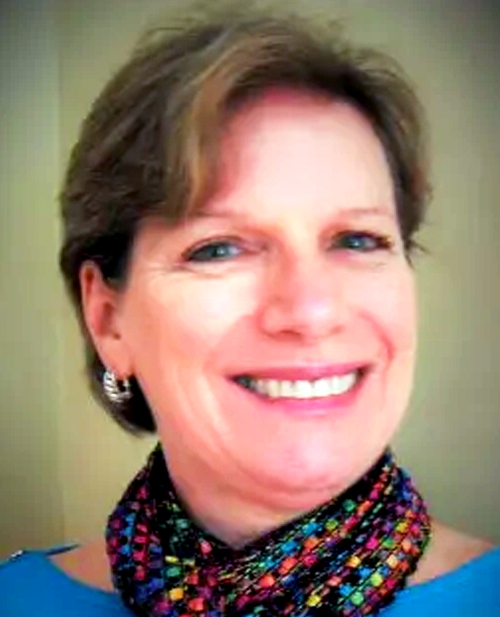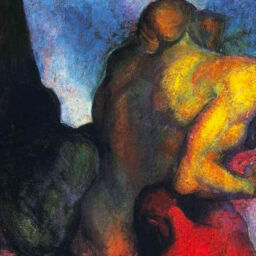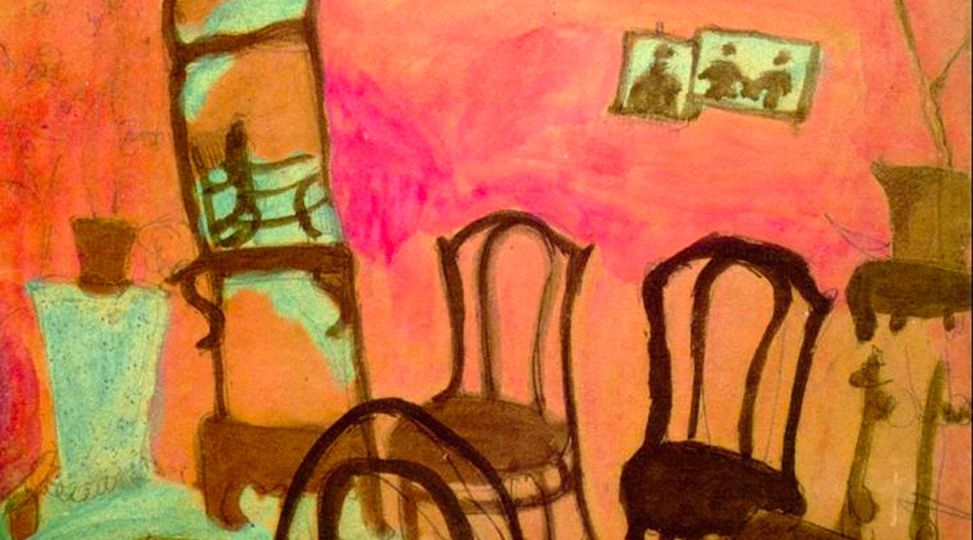
Embracing Si and Fi
An ENTP’s Journey
Julia Grant, October 4, 2017
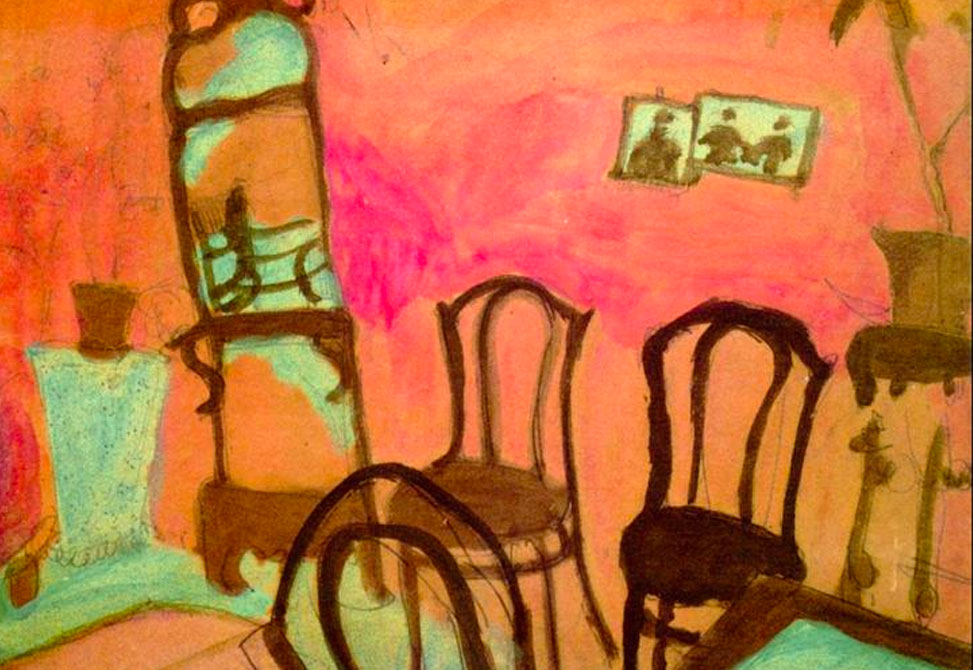
Image as Psyche
G. Jung (1967/2014) famously said: “image is psyche” (¶ 75). James Hillman (1975) emphasized the importance of the image when he wrote: “Every notion in our minds, each perception of the world and sensation in ourselves must go through a psychic organization in order to ‘happen’ at all” (p. xvii). Consciousness depends on the processing of images (pp. 22-23).
To understand how images are processed, Jung defined four psychic functions. The two rational functions, thinking and feeling, are assessing or judging functions. The two irrational functions, intuition and sensation, are perceptive functions (as cited in Wheelwright, 1982, p. 64). In addition to the four functions, Jung (1921/1971) empirically saw in his patients two different attitudes that varied according to the way they related to external objects (such as people or events). He wrote:
The extravert is distinguished by his craving for the object, by his empathy and identification with the object, his voluntary dependence on the object. He is influenced by the object in the same degree as he strives to assimilate it. The introvert is distinguished by his self-assertion vis-à-vis the object. He struggles against any dependence on the object, he repels all its influences and even fears it. So much the more is he dependent on the idea, which shields him from external reality and gives him the feeling of inner freedom. (¶ 535)
When the orientation to an object determines action, the attitude is extraverted. When this attitude is “habitual,” this is an extraverted type (¶ 563). For an extravert, the most differentiated function is employed in an extraverted manner (¶ 574). While an extravert uses the object as a point of reference, the introvert uses the “archetypal idea” (Beebe, 2006, p. 134) as context and point of comparison.
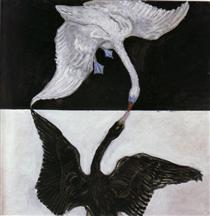
Beebe (2005) reminded us that Jung believed the conscious personality of most people included a pair of functions, one rational and one irrational (p. 39). Through examining his dreams and how they related to his functions, Beebe identified archetypal complexes that he believed were carrying the eight variations of function-attitudes which are mapped out to eight positions in the typological schema. He also referred to the archetypal complexes as “subpersonalities,” or as an “interacting cast of characters” (p. 42). He conceptualized the conscious functions along a “spine” running vertically from the superior, first position, to the inferior, fourth position, and “arms” running horizontally from the auxiliary, second position to the tertiary third position (Beebe, 2004, p. 103). He defined four ego-syntonic (in harmony with the ego) archetypes for the four conscious functions, including: position one superior function as heroine or hero, position two auxiliary function as mother or father, position three tertiary function as puella or puer, and the fourth inferior function as animus or anima. Although the inferior function in position four is unconscious, it is considered ego syntonic because it bridges consciousness with unconsciousness (Beebe, 2005, p. 40). Additionally, he defined four ego-dystonic (dissonant with the ego) archetypes of the shadow: position five as opposing personality, position six as witch or senex, position seven as trickster, and position eight as demonic (p. 42).
Discerning My Type
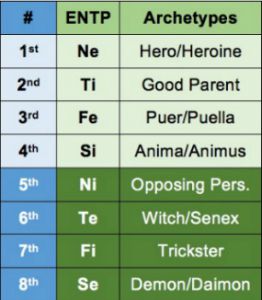
Haas and Hunziker (2014) noted that extraverted intuitives (Ne) want to “generate real-world possibilities” (p. 53). They also wrote that introverted thinkers (Ti) focus on “internal principles and truths” by originating “systems” and “frameworks” (p. 83). Given my hospital example and many similar experiences, I determined that the extraverted intuition and introverted thinking functions are my most differentiated functions which narrowed my type to either INTP or ENTP. To decide between the two, I looked at the third and fourth position functions. For INTP, the inferior function is extraverted feeling. I am attuned to what other people are feeling and tend to shape myself to them. I developed this function while working, and demonstrated it routinely in the final years of my career in higher education administration. Extraverted feeling did not seem like an inferior function for me. For the ENTP type, extraverted feeling (Fe) is in the third position, which accords with my experience of myself. Finally, introverted sensing (Si) as the inferior function of ENTP is a precise fit, for reasons I will discuss below.
Si as an Inferior Function
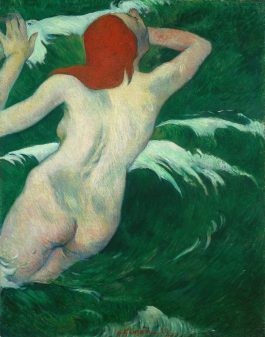

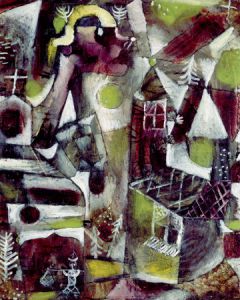

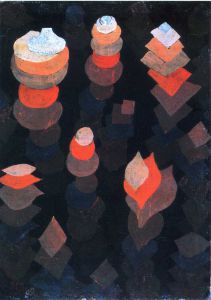
People with introverted sensation in the fourth position “may develop creative pursuits in detailed areas (e.g. history, nature, finance, research, etc.)” (McAlpine et al., 2009). I created a complex chart of accounts for the accounting systems at a large research institution and a series of detailed financial models with which to manage the university budget. These are just two examples of my ability to create complex solutions, something with which I experienced significant satisfaction.
Undeveloped introverted sensation may show up as resistance to “tedious tasks”. In the inferior position, resistance may be heightened to anxiety regarding these types of tasks (McAlpine et al., 2009). My most stressful days are those in which I have a list of details to which I need to attend. I can manage large workloads with many moving parts, but when I have more than a few details to take care of, I feel completely overwhelmed. Individuals with itroverted sensation as the inferior function may also “experience boredom, or feel pity for those who use this function professionally” (McAlpine et al., 2009). One of the people who reported to me in my last position managed an office that ensured that the university was in compliance with various requirements. I dreaded meeting with her every week because by nature the things she needed to discuss were details of regulations, accounting, and procedures to be followed. I found myself unable to prevent yawning in her presence. I was embarrassed, and she was undoubtedly offended. Although it was important content, I found it impossible to stay engaged with the material she was discussing. Undeveloped introverted sensation may become agitated by criticism of past actions, or try to blame others for prior mistakes. Introverted sensation as the inferior function “may catastrophize when confronted with even slightly negative data” (McAlpine et al., 2009). The tendency to catastrophize is something on which I work with my therapist regularly. He calls it my “inner fundamentalist” (a play off my negative reaction to fundamentalism). He also calls it a lack of self-constancy, or all-or-nothing thinking. I can sprint from feeling fabulous and powerful to feeling completely worthless. At these times there is no in between, and no capacity to be more than one thing at the same time. I feel utterly convinced that I am a failure—that I am indeed “inferior.” At such times, my psychic energy is hijacked into a solitary purpose; cataloging all the ways in which I am wrong, with no recognition of positive characteristics or accomplishments.
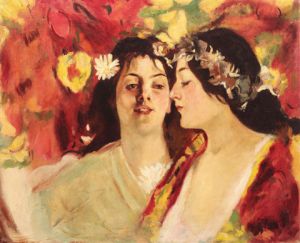

Eventually, the superior function loses some of its appeal or becomes commonplace, and the inferior function shows up in the main function (von Franz, 1971, p. 20). My study of depth psychology satisfies both my extraverted intuition and my introverted thinking. Additionally, it is leading to more sensational awareness as I am now pursuing somatics. The interesting thing is that despite my interest in the body over the years, and the fact that somatics perfectly complements my work in therapy, I needed to overcome significant resistance before I engaged a somatics consultant. This resistance is consistent with Shumate’s (2011) assertion that even while the inferior function bridges conscious and unconscious, it can still bring with it resistance.
Beginning to Distinguish Feeling and Sensation

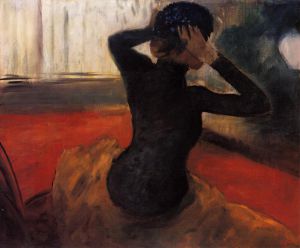
When Feeling is Blocked by Thinking
Feeling as an assessing function (Wheelwright, 1982, p. 72) can be disturbed by thinking (Jung, 1921/1971, ¶ 598). My introverted thinking has been very disruptive to my introverted feeling function. I can vividly remember training myself as a child to ignore my feelings and reason out how I should react. In my childhood mind, my feelings did not serve me well, so I needed to suppress them.
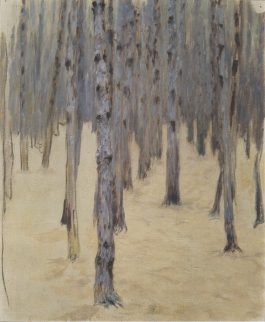
Beebe (2004), who also has ENTP preferences, wrote about privileging other peoples’ feelings over his own, and then over-reacting when his empathy was not appreciated, and the process he underwent to honor his values through the introverted feeling function (pp. 108-109). Like Beebe, I have focused on my extraverted feeling function, and, like Beebe, I have reacted badly when my efforts have not been appreciated, often in the workplace. I cultivated my extraverted feeling function in a leadership position that had little authority, but much responsibility. This required me to utilize influence to accomplish goals. I often spent weeks or months trying to influence academic leaders to agree to an administrative change that would support business objectives, and if they failed to support the change I felt betrayed. In the last year, I have been more explicitly developing introverted feeling. Recently, I realized that I needed to honor my feelings about an uncomfortable communication a family member had sent to me. The appropriate action would be to talk with him about it and ask him to stop the behavior. It took me five days to discern my feelings about it, and a session with my psychotherapist to convince me to favor my own feelings over those of the family member and to assert for what I needed from him. Using my introverted feeling function to evaluate the situation and decide on a course of action is still an emerging skill.
I recognize the introverted feeling trickster regarding my values related to political philosophy. The introverted feeling function is a “decision making process” focused “on the subjective, internal world of absolute personal value systems and assesses all things” relative to those values (Haas & Hunziker, 2014, p. 103). Introverted feeling in the 7th “may trick oneself into believing one’s values are not as important as they actually are” (McAlpine et al., 2009). Political philosophy has been important to me since I became an adult, but I realize that I haven’t adequately discerned and honored my values. I determined my positions by thinking instead of feeling, and my immature introverted feeling led me to react emotionally when someone disagreed with me. I was not able to sustain a conversation about issues because my feelings were too intense. I have been working on discerning my values through my feeling function and I am startled to realize that they are leading to different positions than I have held in the past. I am experiencing more ease in maintaining discourse about issues because my positions are becoming more harmonious with my values. Using my feeling function to assess my position on questions of political philosophy and policy should lead to a more grounded sense of who I am and what I believe.
When introverted feeling is in the trickster position, “[one] can feel manipulated by others’ expressions of values” (McAlpine et al., 2009). I have friends who are particularly attuned to their values and frequently express them. I am aware that I feel tense during these discussions like I am somehow being boxed in by their exclamations. I often feel like they are trying to convince me or manipulate me into agreeing with them, and this feels uncomfortable, causing me to want to conclude the conversation.
Getting a ‘Feeling’ for Si and Fi

My hope is that the whole operation will become more fluid and spontaneous so that I may one day be able to observe the sensation and respond from my feeling function as something arises in the moment. I am also using my thinking function to learn about somatics, which should help me to recognize sensations in a more clear and refined manner. As von Franz (1971) wrote:
You can never rule [the inferior function] or educate it and make it act as you would like, but if you are very clever and are willing to give in a lot, then you may be able to arrange so that it does not throw you. It will throw you sometimes, but not at the wrong moment. (p. 25)
I will strive to avoid being thrown at the wrong moment.
References
Beebe, J. (1992). Identifying the American shadow: Typological reflections on the Los Angeles riots. Psychological Perspectives, 27(1), 135-139.
Beebe, J. (2004). Understanding consciousness through the theory of psychological types. In J. Cambray & L. Carter (Eds.), Analytical psychology: Contemporary perspectives in Jungian analysis (pp. 83-115). Hove, UK: Brunner-Routledge.
Beebe, J. (2005). Evolving the eight-function model. Association for Psychological Types Bulletin, Winter, 2005, 34-39. (Reprint 2006, Australian Psychological Type Review 8(1), 39-43.)
Beebe, J. (2006). Psychological types. In R. Papadopoulos (Ed.), The handbook of Jungian psychology: Theory, practice and applications (pp. 130-141). London, UK: Routledge.
Haas, L., & Hunziker, M. (2014). Building blocks of personality type: A guide to discovering the hidden secrets of the personality type code. USA: Eltanin Publishing.
Hillman, J. (1971). The feeling function. In Lectures on Jung’s typology (pp. 91-179). Dallas, TX: Spring Publications.
Hillman, J. (1975). Re-visioning psychology. New York, NY: Harper.
Jung, C. G. (1921/1971). Psychological types (CW 6). H. Read, M. Fordham, G. Adler, & W. McGuire (Eds.). (H. G. Baynes & R. F. C. Hull, Trans.) . Princeton, NJ: Princeton University Press.
Jung, C. G. (1967/2014). Alchemical studies (CW 13). M. Fordham, G. Adler, & W. McGuire (Eds.). (H. G. Baynes & R. F. C. Hull, Trans.) Retrieved from http://www.ebrary.com.
McAlpine, R., Shumate, C., Evers, A., & Hughey, D. (2009). The function-archetype decoder [Software program]. Louisville, KY: Type Resources.
Myers, I. B., & Myers, P. B. (1980/1995). Gifts differing: Understanding personality type. Mountain View, CA: CPP.
Sandner, D., & Beebe, J. (1995). The role of psychological type in possession from psychopathology and analysis. In M. Stein (Ed.), Jungian analysis (2nd ed., pp. 322-330). Chicago, IL: Open Court.
Sharp, D. (1987). Personality types: Jung’s model of typology. Toronto, CA: Inner City Books.
Shumate, C. (2011). Shadow boxing with Fight Club. Personality Type in Depth. Retrieved from https://typeindepth.org/2011/12/fight-club-functions/
Spoto, A. (1995). The inferior function: A moral issue. In Jung’s typology in perspective. Wilmette, IL: Chiron Publications.
von Franz, M-L. (1971). The inferior function. In J. Hillman & M-L. von Franz, Lectures on Jung’s typology (pp. 3-88). Dallas, TX: Spring Publications.
Wheelwright, J. B. (1982). Psychological types. In St. George and the dandelion (pp. 53-77). San Francisco, CA: C. G. Jung Institute of San Francisco.
Images
Af Klimt, H. (1915). The swan (no. 17). Retrieved from wikiart.org
Bonnard, P. (1905). Marthe and the dog, Black. Retrieved from wikiart.org
Chagall, M. (1908). Small drawing room. Retrieved from wikiart.org
Dégas, E. (1884). Woman trying on a hat. Retrieved from wikimedia.org
Gauguin, P. (1899). In the waves. Retrieved from commons.wikimedia.org
Klee, P. (1919). Swamp legend. Retrieved from wikiart.org
Klee, P. (1922). Growth of the night plants. Retrieved from wikiart.org
Luchian, S. (1899). Spring (two muses). Retrieved from artnet.com
Modersohn-Becker, P. (1902). Girls in the garden with glass ball (Elsbeth). Retrieved from wikiart.org
Moser, K. (1907). Pine forest in winter. Retrieved from wikiart.org
Munch, E. (1894). Eye in eye. Retrieved from wikiart.org
North, M. (1876). A mangrove swamp in Sarawak, Borneo. Retrieved from wikiart.org
Perry, L. C. (1913). The pearl. Retrieved from wikiart.org


